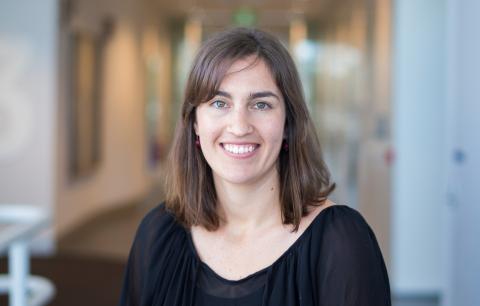
Dr Lilian Downie is involved in Melbourne Genomics’ Congenital Deafness project, which is offering genomic sequencing to Victorian newborns diagnosed with permanent hearing loss in both ears. The project is being led by Professor David Amor, from the University of Melbourne, The Royal Children's Hospital and Murdoch Children's Research Institute. We asked Lilian a few questions about the project.
What is congenital deafness?
Congenital deafness is hearing loss present at birth. Causes can be genetic or non-genetic, but genetic factors are thought to cause more than 50% of all deafness. There are more than 100 genes that can cause hearing loss.
Approximately one in 1,000 Victorian newborns (around 70 babies born each year) have congenital deafness of moderate or greater severity.
What is your role in the Alliance’s Congenital Deafness project?
My role is to co-ordinate the team, comprised of experts from the Victorian Infant Hearing Screening Program (VIHSP), the Victorian Childhood Hearing Impairment Longitudinal Databank (VicChild), as well as paediatricians, geneticists, laboratory scientists and genetic counsellors from the Royal Children’s Hospital, the Murdoch Childrens Research Institute, Austin Health and Monash Health.
I also see patients attending the Royal Children’s Hospital Clinic for Hearing Impaired Children (CHIC).
What excites you about this project?
The project has been able to tap into wonderful pre-existing services such as VIHSP, VicChild and the CHIC clinic, so that we can streamline the care of children diagnosed with congenital hearing loss.
Newborns will be identified through the Victorian Infant Hearing Screening Program (VIHSP), with hearing loss confirmed by audiology testing. VIHSP is a Victorian Government program that tests infants in all Victorian birthing hospitals, reaching over 99% of all newborns.
Only 15 years ago, many children would not have had hearing loss diagnosed until school age. What excites me about this project is that today, all Victorian children with congenital hearing loss can be identified, have hearing aids fitted, see a paediatrician and have the opportunity to find a genetic cause – all within the first year of life.
Genomic sequencing has the potential to provide an answer for the important question of “Why?”, provide family planning information, and guide future screening and follow-up for children with hearing loss.
What do you hope to achieve?
We suspect that just over half of all children diagnosed with hearing loss at birth will have a genetic cause. We hope to identify all of these cases in Victoria within a two-year period, and therefore more accurately define the genetic causes of congenital hearing loss. Diagnosis will help provide prognostic information, recurrence risk advice and inform future research and treatment.
As part of the project, we are also looking at parents’ preferences around additional results from their child’s genomic sequencing that are unrelated to hearing loss. Families will be offered the choice of receiving additional information regarding a range of childhood onset genetic disorders, with genetic counselling to support their decision making.
Can you tell us a bit about you?
I am a clinical trainee at Victorian Clinical Genetics Services and the Murdoch Childrens Research Institute. I am completing a Masters of Philosophy (Medicine) at the University of Melbourne.
For more on the Flagship, read here.
